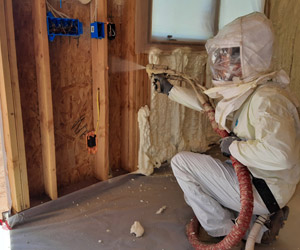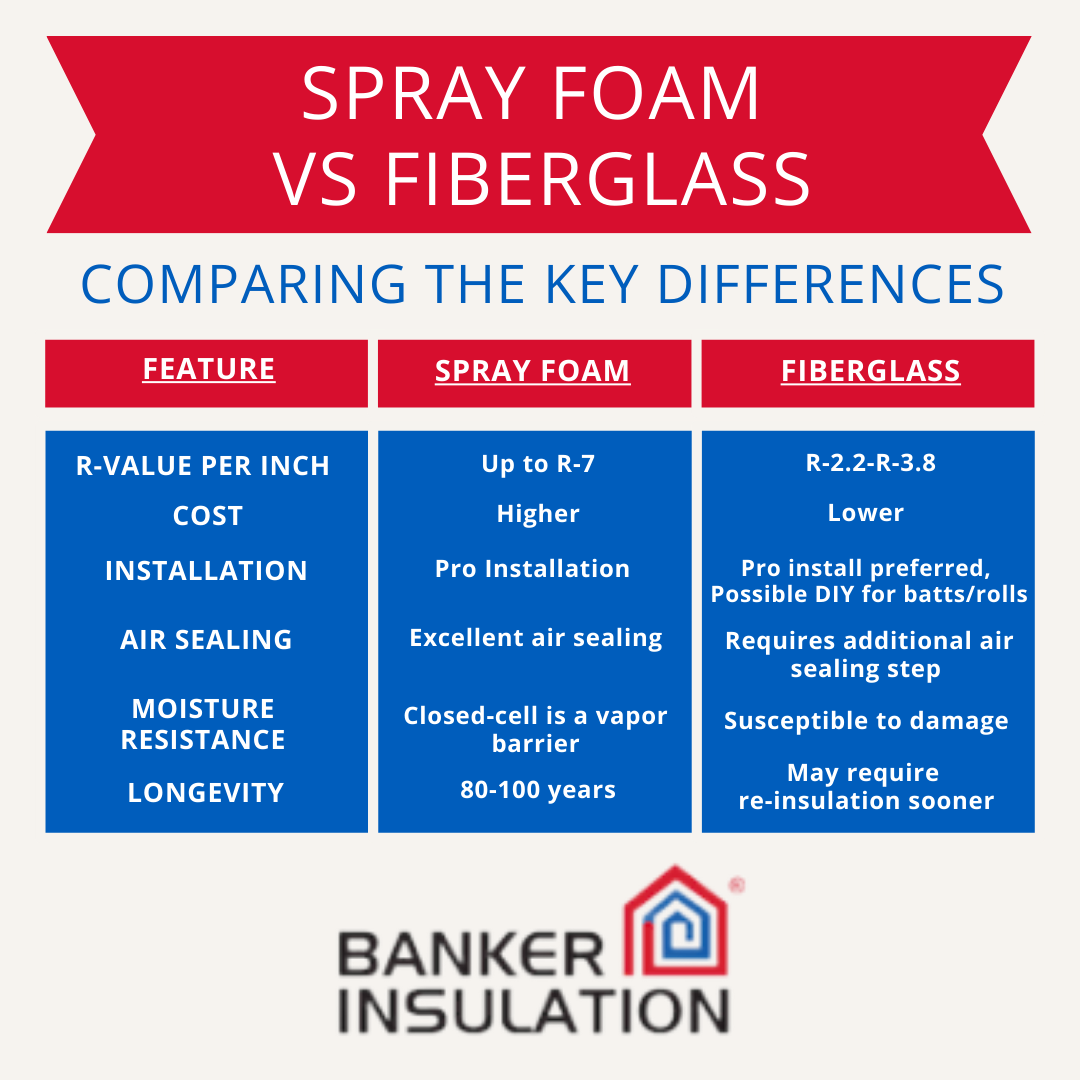Living in Arizona and New Mexico present unique climate challenges for homeowners. From our extreme summer heat and intense sun to occasional cold snaps, properly insulating your home is crucial for year-round comfort and energy efficiency.
But many local homeowners are unsure which insulation is the right one for them: spray foam or fiberglass. In this blog post, we’ll provide a clear comparison to help you choose the right type of insulation for your Arizona or New Mexico home.
Understanding Insulation Basics
The concept of R-value is key when selecting insulation. R-value measures an insulation material’s resistance to heat flow – the higher the R-value, the greater the insulating power. In hot climates like here in Arizona and New Mexico, high R-values and effective air sealing are critical to prevent heat from entering your home through conduction, convection, and radiation.
Spray Foam Insulation

There are two main types of spray foam insulation – open cell and closed cell spray foam. While both types air seal and insulate in one step, open-cell spray foam provides an effective air barrier, has a lower density and R-value per inch (R-3.8) but is more affordable than closed-cell. Closed-cell spray foam is denser, has a higher R-value (up to R-7 per inch), and offers superior air sealing and moisture resistance as a vapor barrier.
Spray foam offers many benefits, including high R-value for excellent insulating performance, impressive air sealing, and sound dampening. However, the cost to install spray foam insulation is more expensive than fiberglass and requires professional installation for safety and effectiveness. Some curing time is also needed during and after the installation process, which can be mitigated by choosing low-VOC (volatile organic compounds) spray foam options and ensuring proper ventilation and installation.
Spray foam insulation excels in attics, crawl spaces, cathedral ceilings, and wall cavities with limited space. Closed-cell spray foam insulation is especially ideal for areas prone to moisture.
Fiberglass Insulation
When we think of insulation, many of us picture fiberglass insulation. The most widely used type of insulation, fiberglass comes in batts, rolls, and a loose fill type that’s blown in. Fiberglass insulation works by trapping air in glass fibers that slows the transfer of heat. It’s highly effective in walls, floors, attics (combined with proper air sealing), and less humid areas. Installing fiberglass insulation is a low-cost insulation option that is readily available.
While fiberglass batts can be installed without professional assistance, it’s highly recommended to have professional insulation contractors handle the installation for maximum results and safety.
Fiberglass also tends to make less of a mess than spray foam insulation and is a great fire retardant. However, fiberglass insulation has a lower R-value per inch, can settle over time, is less effective at air sealing, and is susceptible to moisture damage.

Common Questions Answered
“Is spray foam safe?”
When correctly installed by professionals, spray foam insulation is safe for use. Proper ventilation and choosing low-VOC spray foam options can address any off-gassing concerns.
“Which is better for soundproofing?”
Both spray foam and fiberglass offer quality sound dampening, but dense-pack fiberglass generally performs better at dampening sound transmission compared to spray foam insulation.
Choosing the Right Insulation for Your Climate

For homeowners residing in Arizona’s extreme heat, air sealing and high R-values are crucial. Closed-cell spray foam is recommended for your roofs and attics.
In New Mexico’s variable climate, homeowners need insulation that performs well in both hot and cold conditions. A combination of spray foam and fiberglass insulation can provide effective results.
Both Arizona and New Mexico have different R-value recommendations for home insulation based on the climate zones of each state. Visit Energy Star to see the recommended R-values for your area.
Your Partner in Insulation Solutions
Remember, both open-cell and closed-cell spray foam insulation, as well as fiberglass insulation, have their own unique advantages and disadvantages. Whether you choose the air sealing and insulating combo of spray foam or the more cost friendly fiberglass, the best type of insulation for your Arizona or New Mexico home will depend on your budget, the specific area(s) being insulated, and your home’s unique needs.
At Banker Insulation, our expert insulation team is here to answer all your insulation questions. We take pride in our work and our expertise in meeting your insulation needs. Contact us today to learn more about our insulation services and products for local residential and commercial buildings and receive your free estimate.
